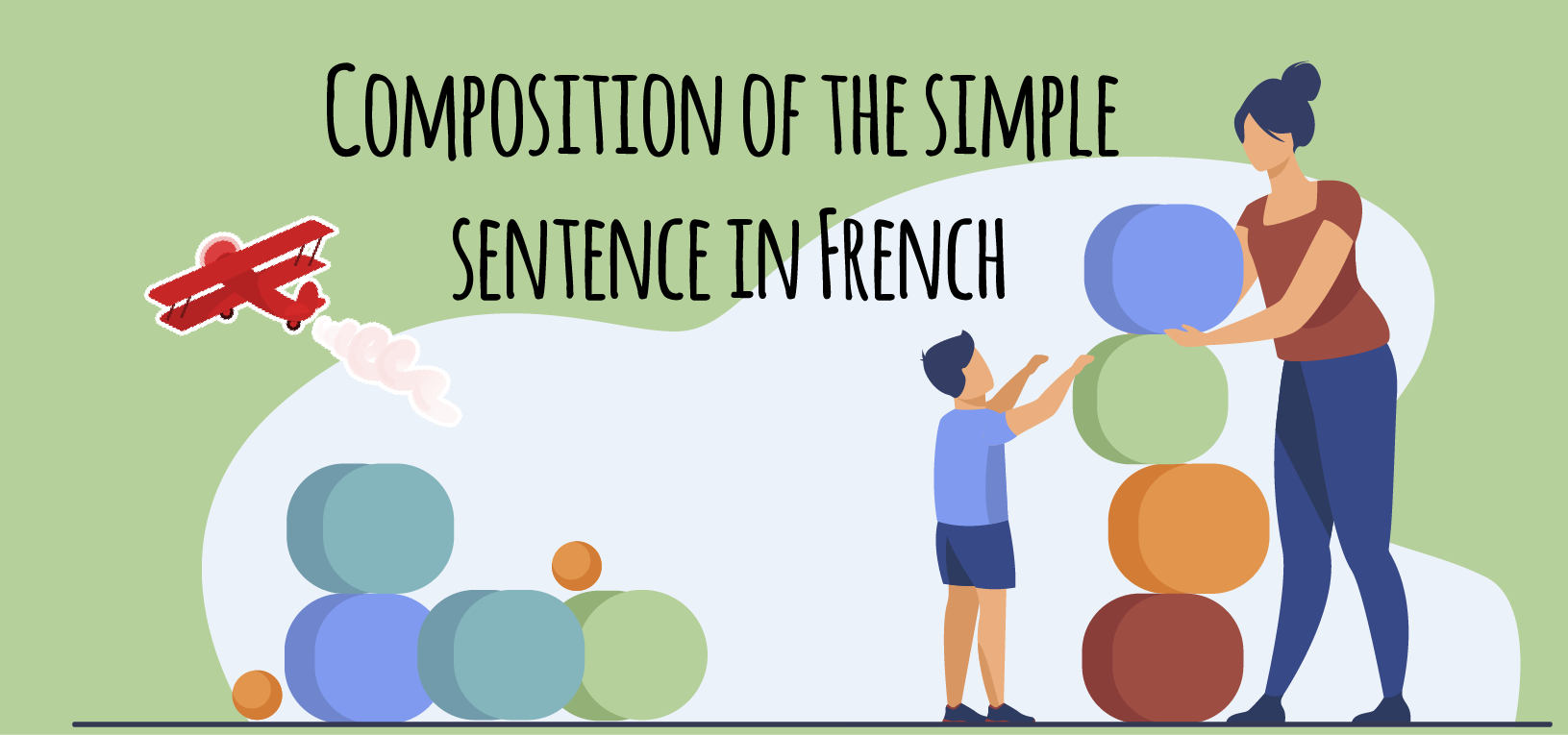Composition of the simple sentence in French

Composition of the simple sentence in French
ÍNDICE DE CONTENIDOS
You may be wondering why make sentences in French or any other language when we can communicate by SMS and other modern techniques? Naturally, for some things and at very specific times we can use new technologies. Of course, we could understand each other eventually.
In reality, and not infrequently when we do without new languages, because we are face to face, or we must write a letter or any other classic means of communication, we realize that we are not doing it correctly. In a word, we do not know how to construct a sentence correctly in our own language and this multiplies when we want to speak and communicate with a foreign language, if we do not know a minimum of its grammatical rules we can be surprised by the insecurity.
Prayer plays an important role in the French language
Most of the time, we do not construct a sentence correctly because we do not know (or no longer know) what it is made of, that all its components have a meaning and a role to play in understanding what we want to communicate. Also, a sentence can be beautiful and fun to read and listen to.
Types of sentences:
First, we recognize a sentence because it begins with a capital letter and ends with a period. Between the two, we can possibly identify groups of words separated by commas so as not to confuse them. But what kind of sentences to choose to suit the right situation?
To face all situations, you should know that there are four main types of sentences in French:
Declarative sentence
It is used to express a true, false, supposed, affirmed or denied action.
- Pierre travaille sur son exercice de Français. / Pierre is working on his French exercise.
Also, a declarative sentence can be negative: (the above case is a positive declarative sentence).
- Pierre ne travaille pas sur son exercice de Français. / Pierre is not working on his French exercise.
The interrogative sentence
We use it to ask a question.
- Pierre travaille-t-il sur son exercice de Français? / Is Pierre working on his French exercise?
The interrogative sentence needs a YES or NO answer at all times. But we can add a negation (interonegative), and then the correct answer is YES or NO:
- Pierre ne travaille-t-il pas sur are exercice de français? / Isn’t Pierre working on his French exercise?
We still have an interrogative formula , it is the partial interrogation, which of course requires another answer different from the previous ones:
- Qui travaille sur son exercice de Français? Pierre (l’interrogation porte sur le subjet: qui? Pierre) / Who is working on your French practice? Pierrre (the question is on the subject: who? Pierre)
Then we will check we will see that the interrogation can be related to many other elements of the sentence in addition to the subject.
The exclamatory sentence
It is the appropriate one to be able to communicate a feeling or an emotion.
- Pierre travaille bien sur son exercice de Français! / Pierre is doing his French exercise well!
The imperative sentence
We use it to give an order.
- Travaille sur ton exercice de Français. / Work on your French exercise.
Composition of a sentence:
There are two ways to compose sentences:
Nominal composition
Its base in a noun or an adjective. We can find it in slogans, on road signs, in titles or even in medical prescriptions:
- Quelle belle voiture! / What a beautiful car!
- Pourquoi cette idée bizarre? / Why this strange idea?
Verbal composition
This is the most universal phrase. It is built around a conjugated verb and sometimes an infinitive verb:
- The truck s’est garé sur l’aire de stationnement. / The truck has parked in the parking lot.
- Depart if tard n’est pas prudent . / Leaving so late is not safe.
A sentence can then be divided into the elements that help to identify and ensure that our interlocutors understand what we want to communicate in French.
Constituent groups
- verbal group.
- gr. of subjects.
- circumstantial group.
- adjective.
The simple sentence is composed of a group of subjects (What or who are we talking about?) And a verbal group (The action). Examples:
- Le gros chien grogne. (Qui ou quoi fait quoi. / The big dog growls. (Who or what does what).
- Le singe roux mange sa banane. (Qui ou quoi fait quoi. / The red monkey eats his banana. (Who or what does what).
In the imperative mood , the group of subjects are eliminated, but are still present by the verb conjugation.
- Prends ton crayon! (Tu prends ton crayon) / Take your pencil! (You take your pencil)
We have studied the verbal group and the subject, which are essential constituent elements (in the sense that if they are eliminated, the sentence is no longer understood). Finally we make an introduction on the optional elements (which we can do without understanding the sentence), the circumstantial complements.
A circumstantial complement tells us about the circumstances of an action , and we can thus express a time, a place, a cause, a consequence, a path, a means, an accompaniment or a goal.
- Ce soir, il va chercher les enfants de l’école / Tonight he will pick up the children from school. (“Tonight”: circumstantial complement of time. “At school”: circumstantial complement of place).
- Le pêcheur a ramené le poisson à terre avec son épuisette. / The fisherman brought the fish to shore with his landing net. (“Using their immersion network”: circumstantial complement of media. “In the bank”: circumstantial complement of place).
- Le roi a gracieusement descendu les marches/ The king graciously descended the steps. (“With grace”: circumstantial complement of manner).
- Ils sont partis en vacances sans leur chien / They went on vacation without their dog. (“Without your dog”: accompanying circumstantial supplement).
If you have paid attention, all these circumstantial complements are included by means of little words or groups of words. They are called prepositions or conjunctions according to the type of complements.
Don’t forget that these are the next calls for the official French exam. Good luck!



